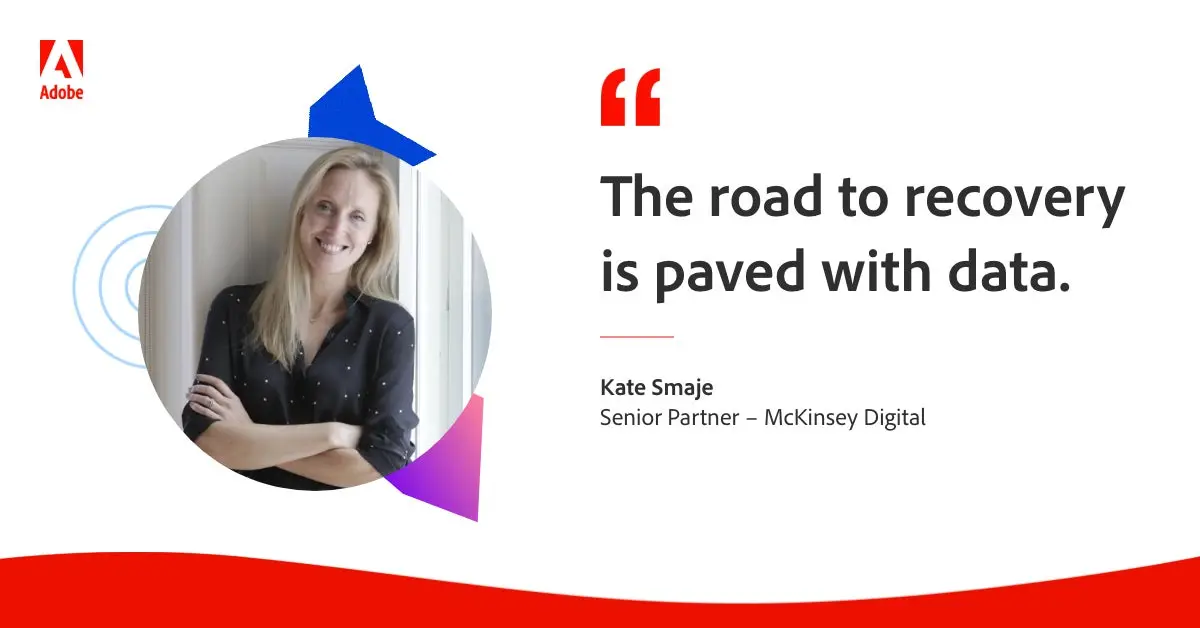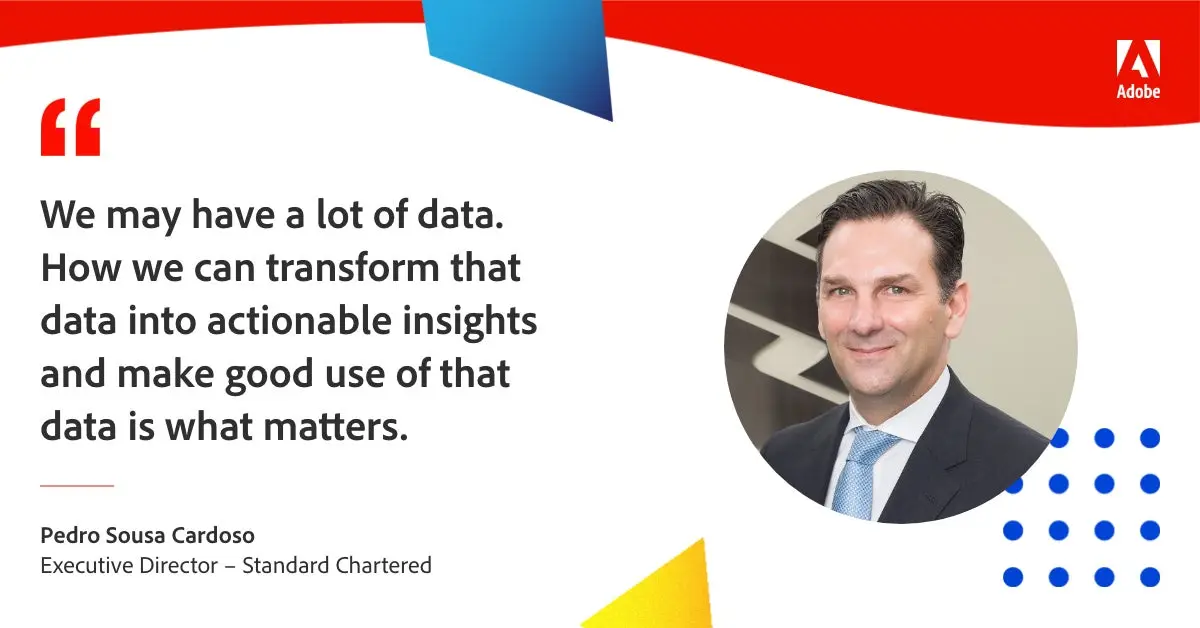Roads to success in real-time customer experience management

The ability to act quickly has become a critical indicator of business success. Here are three key pathways to growth driven by real-time customer experience.
It’s well-known in sales that calling a prospect in the first 5 minutes after they have shown interest in a product makes a sale more likely, whereas just half an hour’s delay results in dramatically lower success rates. So, it’s no surprise that real-time customer experience management supercharges the benefits of being responsive in the new, digital, post-COVID era.
The ability to act quickly has been a critical indicator of business success over the last 18 months, according to a study conducted by Adobe and the London School of Economics. Those organisations that thrived were more agile prior to COVID-19 and prospered by reacting more quickly than their competitors with both short and long-term digital solutions.
Successful organisations “quickly recognised the need to make changes to their business processes, organisational structure and resource optimisation at speed”, the research found.
Cross-functional planning, test-and-learn experiments and a democratic approach to data — converting it into actionable insights and putting those in the hands of staff who were empowered to take quick action — were also key factors.
“The fundamental reality is that the accelerating speed of digital means that we are increasingly living in a winner-take-all world,” says McKinsey Digital Senior Partner Kate Smaje.
“But simply going faster isn’t the answer. Rather, winning companies are investing in the tech, data, processes, and people to enable speed through better decisions and faster course corrections based on what they learn.”
So, where should companies seeking growth driven by real-time customer experiences begin? There are three main roads to navigate on the journey to real-time success.
1. Unified data foundation
“The road to recovery is paved with data,” according to Smaje. However, the problem for most organisations is not a lack of data but a lack of actionable data. In fact, less than one in four rate their organisation as “very strong” when it comes to gaining actionable insights quickly.
Unifying customer data on one platform to support the creation of a real-time customer profile is the most important step to facilitating increased organisational speed and informed, data-driven decision making, according to Gabbi Stubbs, APAC Product Marketing Lead for Data Management Solutions at Adobe.
“We see a massive move towards consolidation,” Stubbs says. “Organisations are leaning to a single or more extensible platform with a scalable infrastructure that can deliver data management but also execute. A real-time profile is the fundamental thing.”
Take 160-year-old international banking group Standard Chartered. With offices in close to 60 countries, the brand has seen dramatic changes in customer behaviour since COVID-19 hit, including three years of mobile adoption condensed into one and one in three customers shifting to digital platforms in the APAC region.
According to Executive Director Pedro Sousa Cardoso, Standard Chartered underwent a process of unifying its data foundation and implementing advanced analytics to provide insights to inform the creation of customer-centric experiences — their goal to attain new customers.
“We may have a lot of data,” says Cardoso, who addressed the recent Adobe Summit. “How we can transform that data into actionable insights and make good use of that data is what matters.”
Another of the bank’s aims was to speed up data-reliant processes. “We were very dependent on manual processes and we wanted to automate and scale up a lot of the processes we have to engage with customers,” he says.
The economics made sense, with the bank’s investment in Adobe’s customer experience stack demonstrating strong ROI — in some segments, increasing conversion rates by high double-digit percentages.
“We have built a global architecture and we’re now scaling it up,” Cardoso says.
2. Rapid access to data and content
It’s one thing to have access to customer data, but quite another to capitalise on it with tailored messaging in real-time.
Organisations that have prospered have been able to equip staff with the tools they needed to get the job done and trust them to do it, fostering “localisation autonomy”, according to the New Era in Experience report.
It’s a familiar concept at Standard Chartered, where content velocity is a focus as the team pushes out messaging across devices to assist cross-channel conversion throughout the customer journey.
The bank has a “build once, enable many times” philosophy to scaling its activities throughout the region, with local content messaging developed based on local customer insights.
According to IDC, close to nine in 10 companies are under pressure to create content assets faster, but this has become a non-negotiable as market conditions have fluctuated with the spread of the pandemic over the past year.
Content velocity at retail group WooliesX is underpinned by access to data, cross-functional teams and agile content approval workflows.
Content development is heavily research-based, with customer analytics available to enable teams to make decisions that inform content creation without requiring lengthy approval processes.
In one example, the group’s digital content team quickly developed messaging to support customers who got themselves a pet at the start of the crisis and needed information on how to look after it.
“They make decisions around building out content rapidly to get to our customers as quickly as possible,” says WooliesX General Manager, Experience and Content, Kat Hartmann.
3. Agile operating processes
Finally, underpinning the data, tools and content essential to real-time success are the processes that support an agile brand. In fact, the ability to be “agile and fast to act” ranked in the top two priorities of executives, alongside innovation, in this year’s 2021 Digital Trends report.
Old-style, waterfall processes are increasingly being exchanged for shorter, more agile work cycles to support real-time customer experience delivery.
Meanwhile, customer experience leaders are three times as likely as other businesses to be adept at building experiments to test insights in the field to help them improve performance.
Following a digital transformation at Melbourne’s RMIT, which has campuses in Vietnam and Melbourne, the marketing team now works in short sprints in cross-functional agile teams, closely aligned to those in the technology team.
The marketing team’s agile process now includes experimentation and testing. In one example, according to Chief Experience Officer Chaminda Ranasinghe, the team conducted an experiment to see which incentives were more attractive to students who come to RMIT to do an associate degree. After testing smaller class sizes and more hands-on support, the opportunity to secure a place in a related degree if the student maintained their grade was found to be the most effective offer. Despite the pandemic, it eventually resulted in a 2000 per cent increase in the number of offers involving guaranteed pathways to almost 1000 in 2020.
With a unified data foundation providing a real-time view of customer behaviour and the tools, resources and processes to understand and cater to those needs as they arise, real-time customer experience management enables organisations to survive and thrive in the post-COVID era.
Source : Adobe










